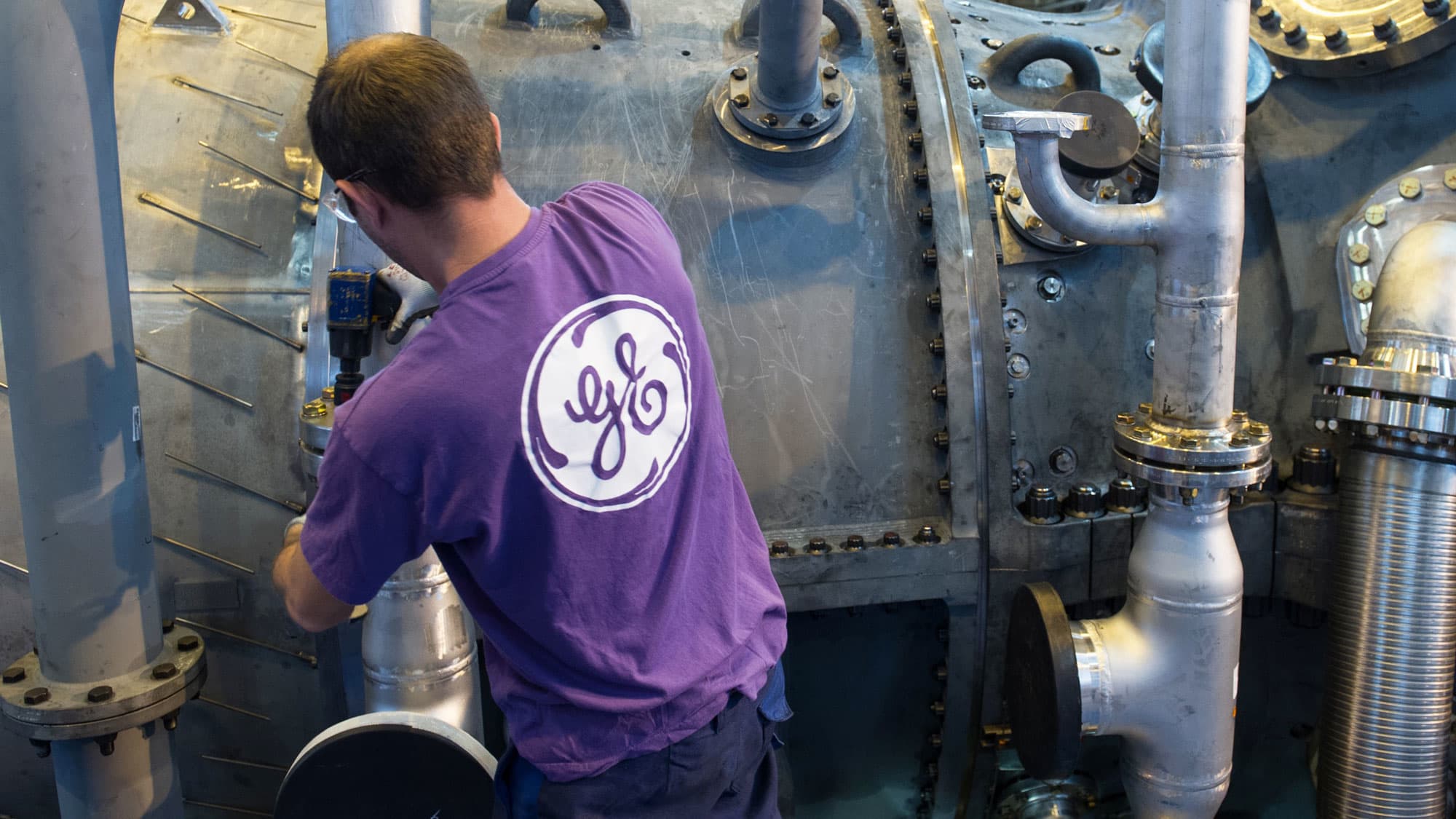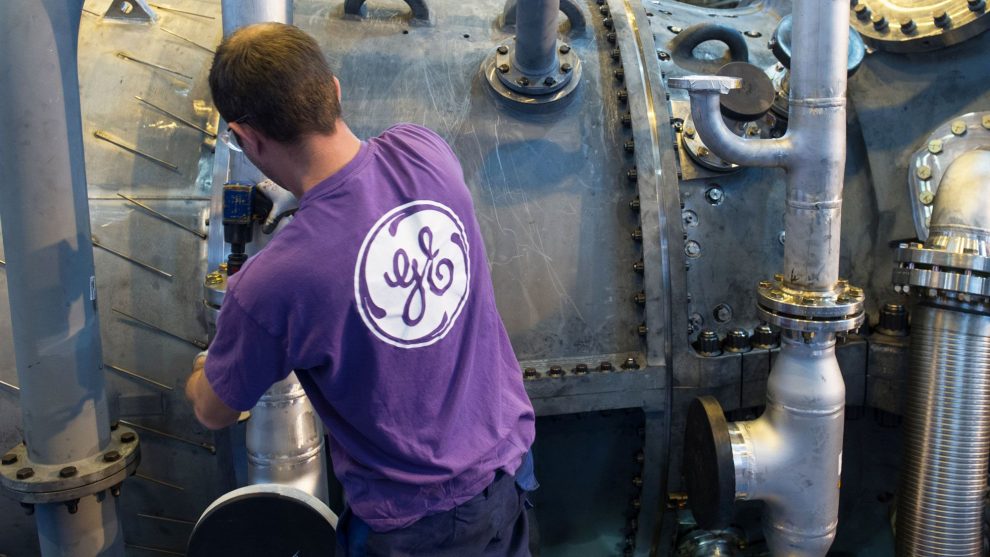
General Electric shares rose Wednesday after second-quarter earnings topped expectations and the battered conglomerate gave a better-than-expected outlook for its industrial cash flow, a key metric watched by investors.
GE reported adjusted earnings of 17 cents a share, down 6% from the same quarter last year but above the 12 cents a share anticipated by analysts surveyed by Refinitiv. The company also reported revenue of $28.83 billion, lower than a year earlier but slightly above the $28.68 billion analysts surveyed by Refinitiv expected.
The company raised its forecast for this year’s earnings to a range of 55 cents to 65 cents a share, up a nickel on both ends from its previous range.
“We made steady progress on our strategic priorities in the second quarter. Our top-line growth was solid, and Power made meaningful improvements on fixed cost reduction and project execution,” GE Chairman and CEO Larry Culp said in a statement.
Shares of GE opened trading up more than 2% but slid in early trading, falling 4% from its previous close of $10.52 a share.
GE also announced that long-tenured executive Jamie Miller will step down as CFO. Miller has been with GE since 2008. She was appointed as CFO in 2017 under former CEO John Flannery, who was removed last year.
“Jamie was the last of the brigade from before and I think what it says — it has nothing to do with her performance — is that Larry has his arms around the change at GE,” William Blair analyst Nicholas Heymann told CNBC’s “Squawk Box. “
Industrial free cash flow improves
The company raised its 2019 forecast for industrial free cash flow to a range between negative and plus $1 billion, up from the previous range of negative $2 billion to flat. GE’s metric of industrial free cash flow is closely watched by investors, as it shows what money the company has left over after paying for operating expenses and capital spending. Especially in the case of GE, industrial free cash flow is used as a gauge of efficiency.
GE’s industrial free cash flow for the second quarter was a negative $1 billion, near the higher end of what some analysts expected. Culp said the better cash flow was in part because of “improvements” in the company’s struggling power business.
Melius Research analyst Scott Davis said GE’s earnings overall “looked clean,” adding that “Larry’s having an impact.”
‘Signs of stabilization’
GE said its power unit is showing “signs of stabilization” but the segment’s orders remained sluggish, with $4.9 billion in booked orders, representing a drop of 22% from a year earlier. Revenue fell 25% year over year in the second quarter, while power barely reported a profit of $100 million.
“The team continues to focus on reducing cost and improving operations,” GE said.
While GE is still a sprawling conglomerate where “everything at this point” matters, Davis said “showing stability in power is key.” Although GE’s overall cash flow may be improving, Davis added that the company needs “some visibility” in the power business for a turnaround to begin in earnest.






